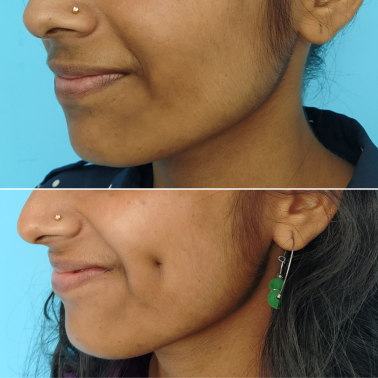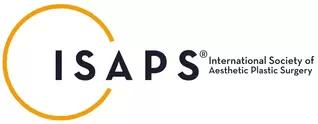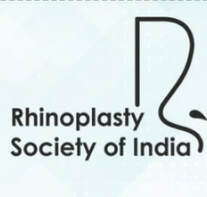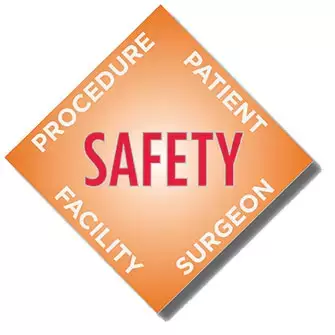|
Nose job, otherwise called rhinoplasty is the surgical alteration of the nose. Nose is a midline structure that occupies a central part of the face. Needless to say, it's appearance can be a cause of concern to some. A rhinoplasty is considered to be a demanding surgery where a difference of a few millimeters can bring about a profound change in result. Compared to cosmetic surgery elsewhere it is more difficult to obtain a predictable result with a nose.
So, what is a good nose? There are many proportions which describe what is ideal. But a nose also has to fit the face. A good nose is supposed to be one that does not attract attention to itself. Rather it directs the attention of the beholder to the eyes. What can be achieved with a nose job? It can improve the function and aesthetics of a face. Here the function refers to breathing. The following can be altered, Aesthetics: 1. Height of the bridge ( dorsum ) 2. Width of the bony part ( it can be narrowed ) 3. Width of the base can be narrowed ( base is what is seen when looking from below ) 4. Appearance of the tip ( it can be slightly pushed up, narrowed or made more prominent ) 5. Deviation of the dorsum can be corrected 6. Abnormalities of the nares and ala can be corrected ( nares are the apertures through which air enters inside nose ) Function: Certain causes of obstruction are tackled with a nose job. These include: 1. External valve collapse ( this is seen as collapse of the opening of nose ) 2. Internal valve collapse 3. Septal deviation and turbinate hypertrophy ( these are present inside nose and if these are present they can be addressed along with correction of external nose ) What is a revision rhinoplasty? This is when one rhinoplasty is done to improve upon a previous rhinoplasty. Revision surgeries are more difficult than the primary rhinoplasty. This done when an individual is dissatisfied with his or her previous nose job. To learn more about rhinoplasty (nose job), click here.
Our lips vary in height and volume. Some of us would rather have them to be smaller in size. Lip reduction is a plastic surgery procedure to permanently reduce the size of lips.
Lip reduction may be performed on the upper or lower lips or both. The amount of the reduction is based on patient expectations. Also, the size of lips has to match rest of the facial characteristics like chin and jaw line. In the absence of ideal lip dimensions, the procedure is as much an art as it is about surgical technique. It is a simple office based procedure. It is carried out under local anesthesia. Sometimes it may be combined with sedation to make it more comfortable. After anesthetizing the lips with local anesthetic, a wedge is removed from the inner aspect of lips. The wound is closed using dissolving sutures. The patient can return home the same day after the procedure. Cold compresses and pain medications are prescribed for a few days. It is common to have post-operative swelling of the operated site for a few days. Post-operative discomfort is easily managed with the help of pain medications. Over the subsequent days, the swelling gives way to an improved appearance of lips. In most cases the scar settles very well. In some individuals, there may be an altered sensation of lips which usually settles without any further treatment. A dimple is considered as cute by many. In some cultures, it is regarded a sign of good luck and prosperity. It results from a difference in the insertion of a cheek muscle into the overlying cheek skin. It can be found on one or both sides of a cheek. In case one does not have a dimple, it is possible to get one with the help of a short plastic surgery procedure. After the small surgery, the individual can soon return home. Creating a dimple begins with a consultation when the patient and doctor together decide on the location of the dimple. Once the position has been marked the doctor anesthetizes the site by injection of a local anesthetic. An incision is placed inside the cheek and a small bit of tissue is removed between the skin and the muscle. A dissolving stitch is used to tether the dermis of the cheek to the underlying muscle. The incision inside the mouth is closed with dissolving stitches. Medications are prescribed for the discomfort which may last for a few days. Antibiotics are advised for five days. Initially, the dimple is seen at rest. As the suture dissolves, the dimple becomes evident only during a smile. During this period scar tissue that forms between the cheek and the muscle is responsible for the dimpling. It is not possible to precisely control the depth of a dimple due to the presence of multiple factors that affect wound healing. In some cases, the dimple may be shallow and can be made deeper with the help of a revision procedure. It is difficult to undo a dimple once it has been created. This should be borne in mind before undertaking the procedure. |
AuthorI like to keep it simple. CategoriesArchives
June 2024
Categories |
- Home
-
Cosmetic
- Fat grafting
- Swellings and moles
- Scar revision
- Leukoderma (Melanocyte transfer)
- Hair transplant
- Facial rejuvenation procedures
- Nose job (Rhinoplasty)
- Cleft lip nose correction
- Ear (Otoplasty)
- Lip reduction
- Breast augmentation
- Breast reduction
- Tuberous breasts
- Axillary breasts
- Gynecomastia
- Liposuction
- Brachioplasty (Arm contouring)
- Abdominoplasty (Tummy tuck)
- Female genital rejuvenation
-
Reconstructive
- Contact
- Blog
- Home
-
Cosmetic
- Fat grafting
- Swellings and moles
- Scar revision
- Leukoderma (Melanocyte transfer)
- Hair transplant
- Facial rejuvenation procedures
- Nose job (Rhinoplasty)
- Cleft lip nose correction
- Ear (Otoplasty)
- Lip reduction
- Breast augmentation
- Breast reduction
- Tuberous breasts
- Axillary breasts
- Gynecomastia
- Liposuction
- Brachioplasty (Arm contouring)
- Abdominoplasty (Tummy tuck)
- Female genital rejuvenation
-
Reconstructive
- Contact
- Blog
You can leave us a comment using the contact form below.
We shall get back to you at the earliest.
We shall get back to you at the earliest.
Links
- Face procedures | Rhinoplasty, Otoplasty, Lip reduction, Fat grafting
- Body procedures | Gynecomastia , Breast reduction, Abdominoplasty, Brachioplasty, Liposuction
- Skin procedures | Scar revision, Moles, Leukoderma surgery
Let's be friends !
Follow us at Facebook and Twitter.
Follow us at Facebook and Twitter.
© 2024 Amicus Clinic (Plastic Surgery Centre, Trivandrum). All rights reserved.

 RSS Feed
RSS Feed



